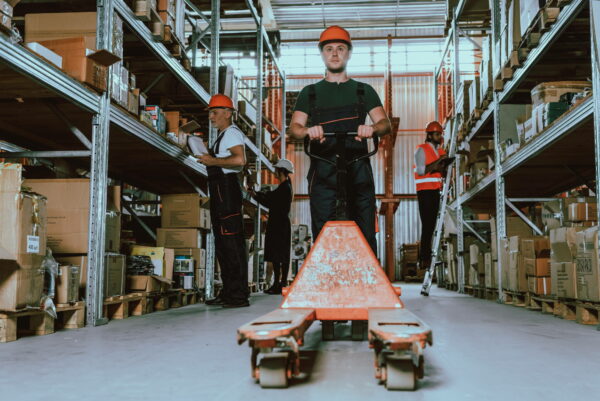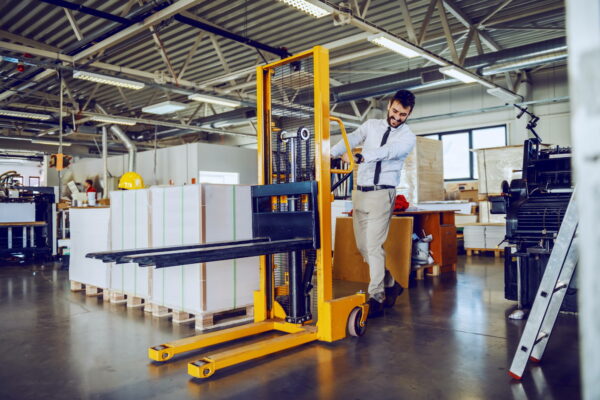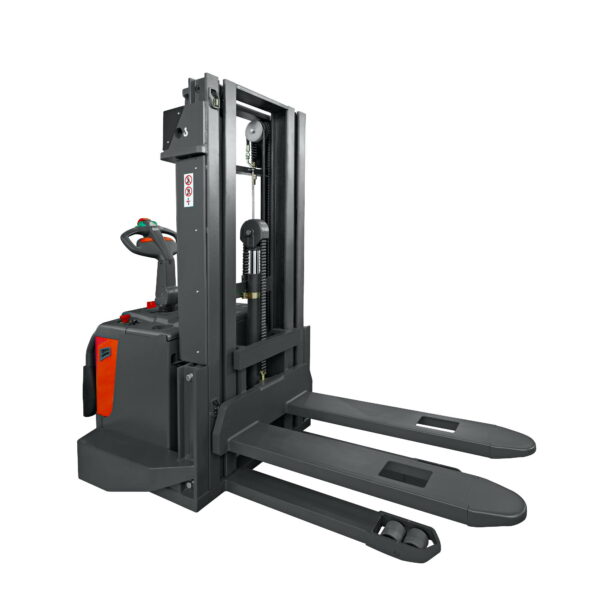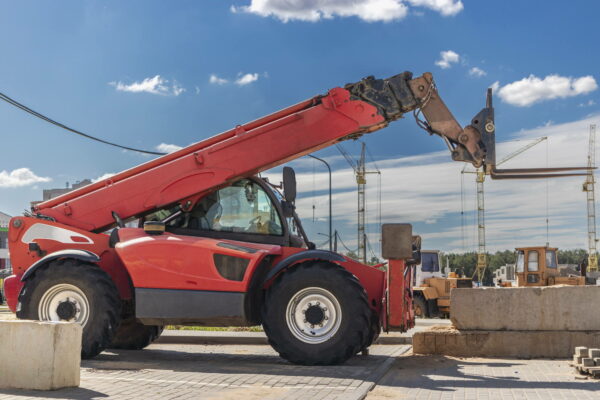You need to unload a lorry, but don’t have a forklift. What can you do?
The majority of freight that is carried on HGVs is unloaded using a forklift. It consists of palletised goods in packet, bags or boxes that can be easily stored in racking. Obviously there are other types of goods moved by lorries that don’t require forklifts (petrol, milk, grain, etc), but if you see a curtainside vehicle on your travels, there’s a close to 100% chance it’s carrying goods on pallets.
The issue for recipients of the goods is how to unload them. A forklift can be overkill for companies that just receive sporadic pallets. Fortunately there are other options.
Pallet jack

Some manual pallet jacks are capable of lifting 2000kg, but you have to be careful when using them. They can get away from you on a slope, and that includes due to the camber of the road making the deck of the lorry slope towards the kerb.
You can use the airbags to drop the rear slightly to make it easier to wheel the pallet jack out.
To lift the pallet jack, pump the handle. To drop it, pull the lever. It’s best practice to push the pallet jack, if practical.
The most common pallet jacks only lift goods a couple of inches off the ground so they are only good for shifting things from location to location, not for stacking. However, there are some machines which will lift to a medium height (usually around a metre).

Powered pallet jack
These are the same as a manual pallet jack, but take some of the grunt work out of it as the electric motor takes care of the motive power rather than you having to push and pull them. This makes them safer to use on a ramp or slope. They’ll cope with shallow gradients.
Some are simply a manual pallet jack with a motor, while others have a larger engine and sometimes a ride on platform.

Powered pedestrian-operated forklift, or walkie stacker
These have many different names. It’s basically a forklift but you walk behind it operating a tiller. Care must be taken in tight spaces as they can lift heavy loads. Often they have outriggers on the front that fit under the racking so that they can lift goods higher.
Some of them have a rider platform.

Breaking freight by hand
In the olden days, this was how it was always done – unpacking the freight into manageable loads for manual handling. It’s tiring and slow, though, pus there’s the risk of fatigue and injury.
Front-end loader
Front-end loaders can have fork attachments meaning they can pick up pallets, therefore can unload a truck from the side (if it’s a flat deck or curtainsider).
Truck loader crane
A lorry-mounted crane can have fork attachments. These are often used to move pallets of bricks. Of course, you can always use a crane from one truck to unload another truck.
Telehandler
Telehandlers are more commonly found on farms and construction sites, but they are frequently found with fork attachments and have the flexibility of a front end loader and a lorry-mounted crane.

- Understanding the National Standards for Riding Mopeds and Motorcycles
- Livestock Transport Rules UK: A Complete Guide to Animal Transportation Requirements
- The Role of Safety Advisers in Dangerous Goods Transport
- Sustainable Driving: Reducing Your Environmental Impact on the Road
- Developing Effective Lesson Plans for Driver Training
- UK Agricultural Vehicle Registration and Tax Relief
- Challenges of Transporting Radioactive Materials (Class 7)
- Exemptions and support for Clean Air Zone charges
- Navigating Legal Requirements: The UK Motorcycle Licensing Rules
- Safe Transportation of Agricultural Chemicals and Hazardous Materials
- Innovations in Vehicle Construction for ADR Compliance
- Motorcycle Recovery Operations: How to Recovery a Broken Down Motorbike
- Alternative Fuels in Agricultural Vehicles
- Carriage of Dangerous Solids in Bulk Containers
- Understanding Limited Quantity Exemptions in ADR